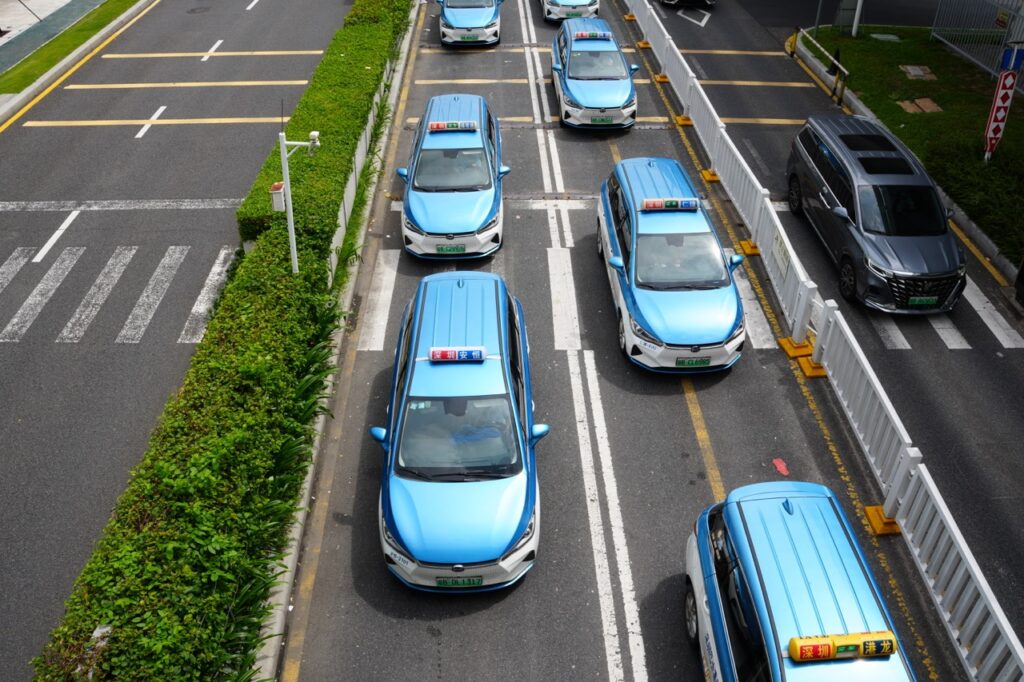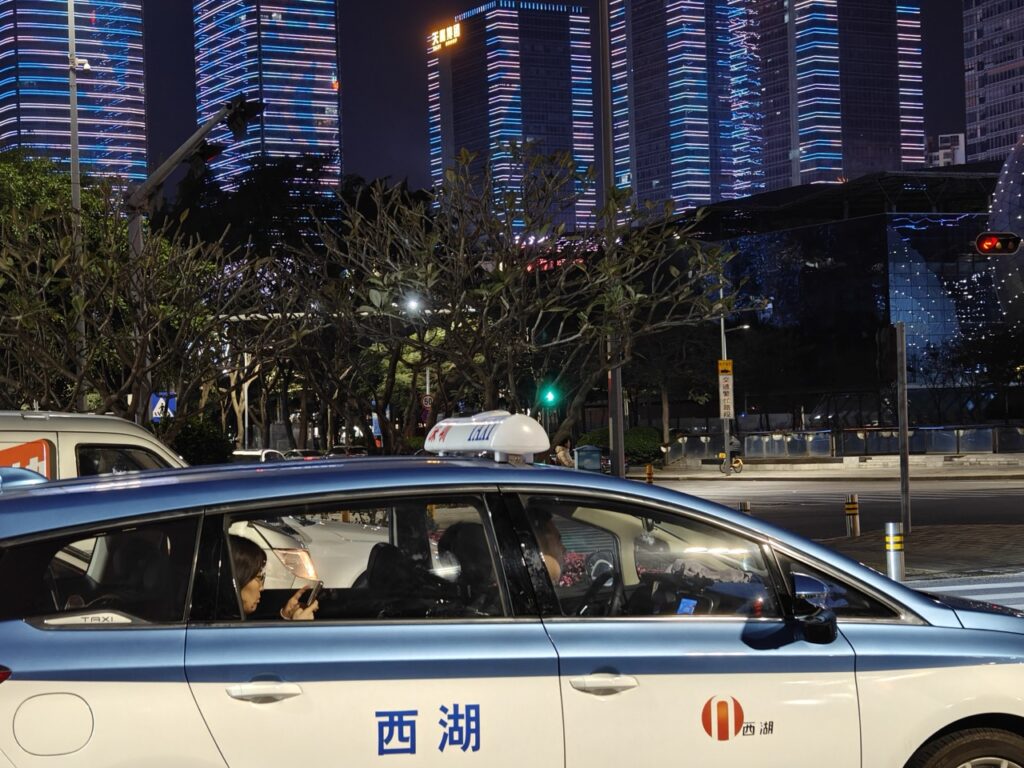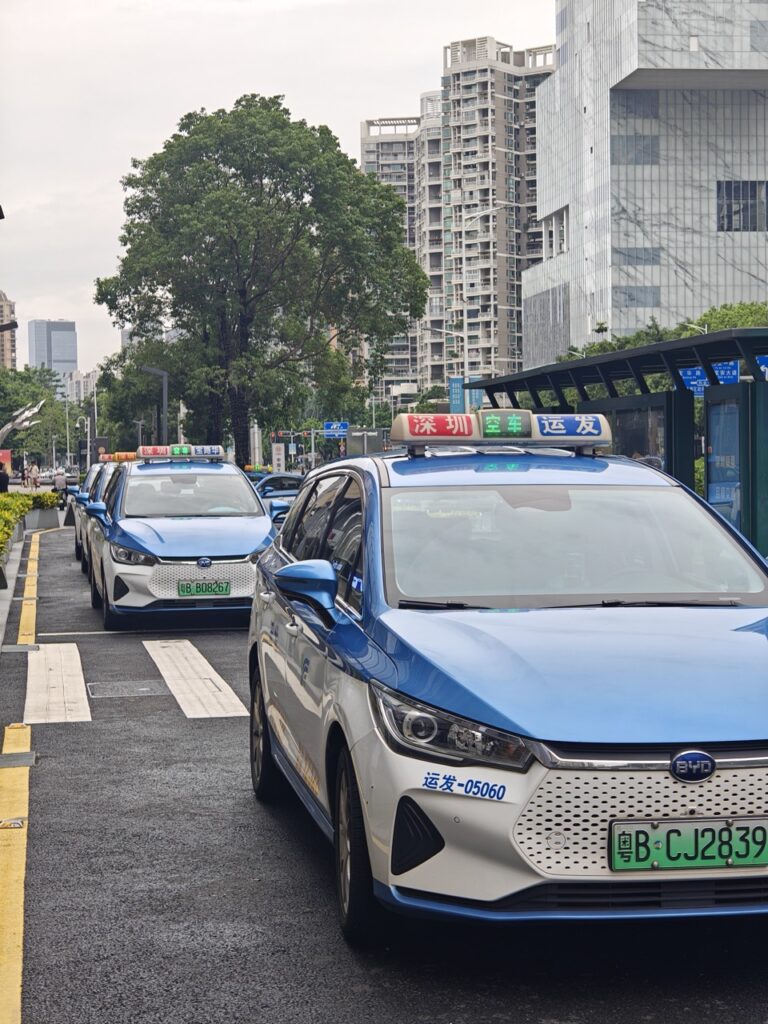Moving to Shenzhen can feel overwhelming, especially when navigating the city’s transportation system. Imagine standing on a bustling street corner, unable to communicate with drivers as empty taxis speed past. Meanwhile, your phone screen is filled with confusing Chinese taxi app interfaces in Chinese, leaving you unsure of what to do next.
This transport war impacts your day-to-day life in serious ways. You might miss important business meetings because you are not aware of how to employ a taxi in China. Simple trips to the grocery store become stressful adventures. You find yourself paying high prices to tourist-oriented services, yet locals pay a small percentage of the price.
But it is very easy to navigate the city once you know how. This guide not only shows you the best taxi tips apps in China but also demonstrates to you how to actually use taxi apps in China as a native citizen.
Understanding Shenzhen’s Taxi System
The transport system of the city is among the best in the world. Shenzhen has over 15,000 registered cabs and a number of ride-hailing applications to cater to 12.5 million people daily.
Chinese traditional cabs in Shenzhen are in unique colors:
- Red taxis: Standard city service (¥10 starting fare)
- Green taxis: Premium service with newer vehicles (¥12 starting fare)
- Yellow taxis: Airport and long-distance service (¥15 starting fare)
How Shenzhen Taxi Pricing Works
The taxi tips are not imposed as in many cities, and instead, Shenzhen has a strict meter system. Here’s the breakdown:
| Service Type | Starting Fare | Per KM Rate | Rush Hour Surcharge |
| Standard Red | ¥10 | ¥2.40 | 25% (7-9 am, 5-7 pm) |
| Premium Green | ¥12 | ¥2.80 | 25% |
| Airport Yellow | ¥15 | ¥3.20 | No surcharge |
The metered system protects you from overcharging, but understanding these rates helps you budget effectively for transportation costs in the city.

Best Chinese Taxi Apps for Shenzhen
Taxi apps in China have revolutionized transportation in the region. These platforms offer English interfaces and accept international payment methods, making them essential tools for expats.
DiDi Chuxing: The Dominant Player
DiDi serves over 550 million users across China and dominates Shenzhen’s market. This Chinese taxi app offers several service tiers:
DiDi Service Options:
- Express: Economy rides similar to UberX (¥8-15 starting fare)
- Premier: Mid-range vehicles with professional drivers (¥12-20 starting fare)
- Luxe: High-end cars for business travelers (¥25-40 starting fare)
- Hitch: Carpooling service for budget-conscious users (30% cheaper than Express)
Meituan Dache: The Growing Alternative
Meituan’s ride-hailing service launched in the city in 2018 and now captures 15% of the local market. The app integrates with Meituan’s ecosystem, offering discounts when you order food delivery simultaneously.
Meituan Service Levels:
- Economy: Basic rides competing directly with DiDi Express
- Comfort: Mid-tier service with newer vehicles
- Business: Premium cars for corporate users
CaoCao Chuxing: The Electric Choice
CaoCao specializes in electric vehicle transportation, making it popular among environmentally conscious expats in the region. Their fleet consists of 95% electric vehicles, reducing both environmental impact and ride costs.

Complete Setup Guide for Taxi Apps
Setting up these taxi apps in China requires specific steps that many guides overlook. Here’s the complete process that actually works for foreigners in the city.
DiDi Registration Process
Step 1: Download DiDi from your phone’s app store before arriving in China (Chinese app stores have different versions).
Step 2: Sign up with your international phone number. The application will provide verification codes that are compatible with the majority of international airlines.
Step 3: Upload a clear photo of your passport. The Chinese laws mandate that identity verification be done for all ride-hailing clients.
Step 4: Add payment methods in this specific order:
- International credit card (Visa/Mastercard accepted)
- PayPal account (backup payment method)
- WeChat Pay or Alipay (after setting up a Chinese bank account)
Payment Setup Tips
Most Chinese taxi app platforms now accept international cards, but setup can be tricky. You need to ensure your bank allows international transactions and your card has sufficient credit limits for pre-authorization holds.
Payment Method Priority:
- International Credit Card: Works immediately, but may have foreign transaction fees
- PayPal: Reliable backup option with competitive exchange rates
- Chinese Digital Wallets: Best rates once you establish local banking

Essential Taxi Tips & Apps for Shenzhen Expats
These taxi tips in China come from real expat experiences in Shenzhen, China. Following this advice prevents common problems and saves money on transportation costs.
Communication Strategies
Before Your Ride:
- Screenshot your destination in Chinese characters
- Save hotel address cards in your phone’s photos
- Learn basic Mandarin phrases for directions
- Keep translation apps downloaded and ready
During Your Ride:
- Show the driver your destination screenshot immediately
- Use the app’s built-in translation features for communication
- Monitor the route using your phone’s GPS to ensure the correct direction
- Keep your phone charged for payment processing
Money-Saving Techniques
Timing Your Rides:
- Avoid rush hours (7-9 am and 5-7 pm) when surcharges apply
- Use carpooling options during peak hours to split costs
- Book rides 10-15 minutes in advance for better driver matching
- Choose Express over Premier unless you need premium service
Location Optimization:
- Walk to major streets or landmarks for easier pickup
- Avoid requesting rides from narrow alleys or residential complexes
- Use shopping malls and hotels as pickup points when possible
- Learn popular landmarks near your frequent destinations
Advanced Taxi Strategies for Shenzhen
Once you master basic taxi tips, these advanced strategies help you navigate the city like a resident.
Multi-App Strategy
Smart expats use multiple taxi apps in China simultaneously. During peak hours, request rides on DiDi, Meituan, and CaoCao at the same time, then cancel the slower responses. This approach reduces waiting time by 40% during busy periods.
Destination Input Techniques
Chinese taxi app platforms work better with precise location data. Instead of typing English addresses, use these methods:
- Copy Chinese addresses from Google Maps or Baidu Maps
- Use landmark names in Chinese characters
- Input specific building names rather than general area descriptions
- Save frequently visited locations in your app favorites
Peak Hour Alternatives
When surge pricing makes taxis in China expensive, consider these alternatives:
- Shenzhen Metro covers most expat-heavy areas efficiently
- Shared bikes for short distances (under 3km)
- Walking combined with public transport for medium distances
- Scheduled rides booked during off-peak hours
Do’s and Don’ts for Shenzhen Taxis
Following these taxi tips in China prevents common expat mistakes and ensures smooth transportation experiences in the region.
Essential DO’s
Always verify driver and vehicle details before entering any taxis in China. Match license plate numbers, driver photos, and car models with your app information.
Keep cash as a backup payment even when using Chinese taxi app platforms. Some drivers prefer cash, especially during system maintenance periods.
Rate drivers honestly to improve service quality. The rating system helps maintain high standards across taxi apps in China.
Learn emergency phrases in Mandarin for safety situations. Know how to say “hospital,” “police,” and “stop the car” in Chinese.
Share ride details with friends or family when traveling alone, especially at night in the city.
Critical DON’Ts
Never enter unmarked vehicles which purport to be taxis in China. Illegal drivers can be overcharging or unsafe.
Do not dismiss alerts on taxi app surge pricing in China. With a patience of 15-20 minutes, a lot of money is saved.
Do not leave valuables in sight in a conventional taxi in China. Lock phones, wallets, and bags.
Do not dispute ways with other drivers who do not know where you are going. Get them using your phone’s GPS.
Do not pay additional charges for anything on top of the app-quoted price without being clarified in advance.
Useful Resources and Tools
These resources make using taxis in China and taxi apps in China much easier for expats living in the region.
Essential Apps for Transportation
Navigation Apps:
- Baidu Maps: Most accurate for local addresses and real-time traffic
- Google Maps: Works with VPN but has limited Chinese address data
- Amap (Gaode): Popular alternative with taxi integration
Translation Tools:
- Google Translate: Camera feature translates street signs and addresses
- WeChat: Built-in translation for quick communication
- Pleco Dictionary: Comprehensive Chinese-English dictionary with pronunciation
Emergency Contacts and Services
Ride-Hailing App Support:
- DiDi Customer Service: Available through app and website
- Meituan Support: Integrated customer service platform
- CaoCao Support: Electric vehicle ride service help center
Government Transportation Services:
- Shenzhen Taxi Complaint Hotline: 12319
- Shenzhen Transportation Bureau: 0755-83228168
- Shenzhen Metro Official Site: Public transportation information
Emergency Services:
- Police: 110
- Hospital Emergency: 120
- Fire Department: 119
Banking and Payment Setup
International Banking:
- HSBC China: Expat-friendly banking with English support
- Bank of China: International card services and currency exchange
- Ping An Bank: Digital banking solutions for foreigners
Payment Platform Registration:
- WeChat Pay: Requires a Chinese bank account for full functionality
- Alipay: Accepts some international cards for tourist accounts
- UnionPay: Domestic card network with international partnerships
Ride-Hailing App Downloads:
- DiDi Chuxing – iOS: Apple App Store download
- DiDi Chuxing – Android: Google Play Store download
- Meituan – iOS: Full Meituan ecosystem app
- CaoCao Chuxing – iOS: Electric vehicle ride-hailing
Frequently Asked Questions
How will I pay for a taxi in Shenzhen, China?
Most rides within the city cost between ¥1 ¥ -40 for typical expat journeys. Trips to the airports cost between ¥60 and 120, depending on your destination district. The price of the Chinese taxi app services is usually 10-20% lower than traditional taxis in China because of the competitive prices and the reduced number of surcharges.
Do taxi apps in China require me to speak Chinese?
No, the Chinese modern taxi apps have English interfaces and in-built translators. But with some simple Mandarin expressions, you can enjoy yourself a bit more. The majority of the drivers in the city know simple English terms such as airport, hospital, and shopping mall.
Do they accept international credit cards to pay for taxis?
Yes, Visa, Mastercard, and PayPal are accepted in Yes, DiDi and most major Chinese taxi app platforms. You might, however, incur foreign transaction charges with your bank. In China, some traditional taxis still use cash payments and therefore keep small bills as an emergency.
How can I take the taxis safely late at night in Shenzhen?
In China, take official taxi apps instead of picking up taxis in the streets after 10 pm. Always tell a person you know well your ride information, and always sit in the back of the driver and not in the front seat. There is great public safety in the city, but taking simple precautions will guarantee a relaxing life.
What should I do to prevent peak-hour surge pricing?
Check several taxi apps in China to compare the prices when the situation is busy. Stroll out to less busy pickup spots, or wait 20-30 minutes until demand is down. Certain Chinese taxi apps also have scheduled rides, which predetermine a lower price during off-peak times.
Conclusion
Getting transportation in Shenzhen, China, is what will turn your expat life into a hassle-free ride. Now you know how taxis in China work, which taxi apps in China are the most effective with foreigners, and the necessary Taxi Tips & Apps that will save you money and time.
Preparation is the key to transportation success, and the right tools. Install several Chinese taxi application products, install international payment, and rehearse simple communication plans before you get in a situation where you need one.
Ready to explore more insider guides for expat life in China’s tech capital? Visit Shenzhen Post for comprehensive resources on living, working, and thriving as a foreigner in Shenzhen’s dynamic environment.

